Let’s Take a Traditional City Break 2013
September 15, 2013
I haven’t done so much on the city design or Traditional City theme this year. There’s a ton of material already in the archives, and I get the impression that very few people have really absorbed what’s in there. They get the basic message, but maybe not some of the design subtleties.
Click Here for the Traditional City/Heroic Materialism Archive
For today, let’s just look at some nice Traditional City neighborhoods. These are from all over the world, but, as you’ll see, they all look about the same:
“Really Narrow Streets,” or what you could call “pedestrian streets.” Maybe “people streets.” Most of them are Really Narrow, in the 8-25 foot wide range from building to building. However, you can also have “people streets” that are wider than that, even fifty or sixty feet wide, although those are rarer because you just don’t really need that much width for people alone. Without literally thousands of people, they can feel very barren and empty, actually somewhat forbidding. “People streets” are streets that don’t have a central, segregated automobile roadway, although cars may in fact be allowed there, as is quite common actually. Even if cars are allowed, drivers will tend to avoid such streets unless they have a specific reason to be there, such as a delivery or perhaps because they live there. So, there isn’t much traffic.
Buildings tend to be side by side (attached or nearly so), and right up against the street with no front setback. This is not necessarily the case, as we saw in some Japanese single-family residential areas, but in general front and side setback is minimal.
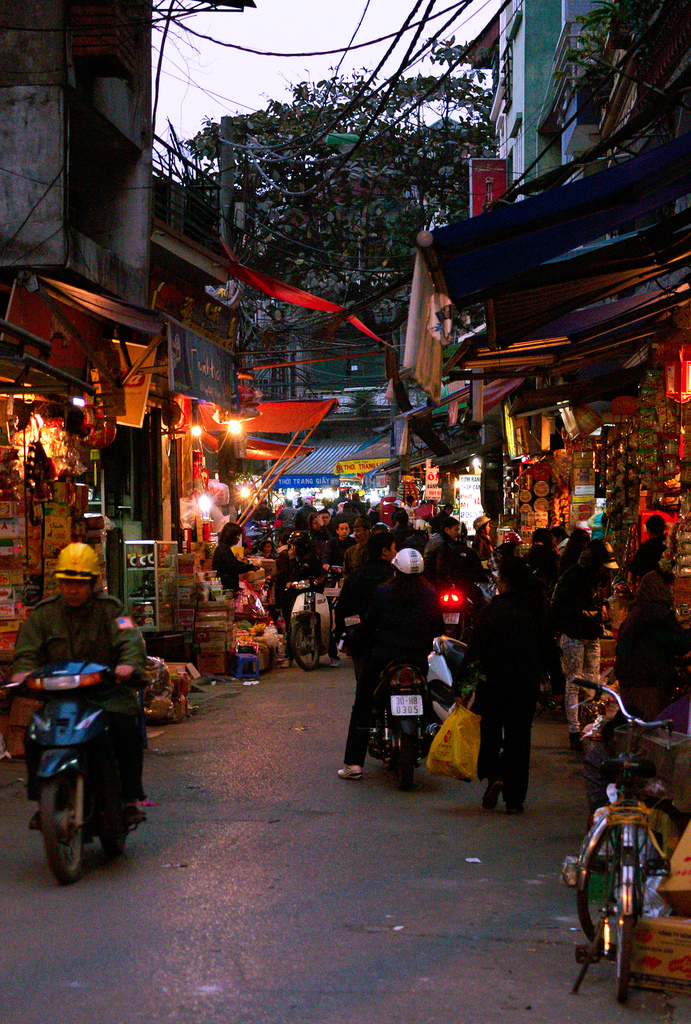
Hanoi, Vietnam. “Really Narrow Street” about twelve feet wide in this case. Cars (motorcycles) are not banned, but as you can imagine you would avoid a street like this if you wanted to drive faster than walking speed! No front or side setback. Fun!

Kufstein, Austria. Very different cultural tradition than Vietnam (although not really; much of Vietnamese urbanism was influenced by the French). Again, about 14 feet wide here, no front or side setbacks. Doesn’t that look like a nice place? Could you live there, in a an apartment (large or small) on the second or third floor of one of these buildings? I bet that would be pleasant. A lot more pleasant than where you are living now? Of course. Why aren’t there places like this in the United States? Why don’t we build some?
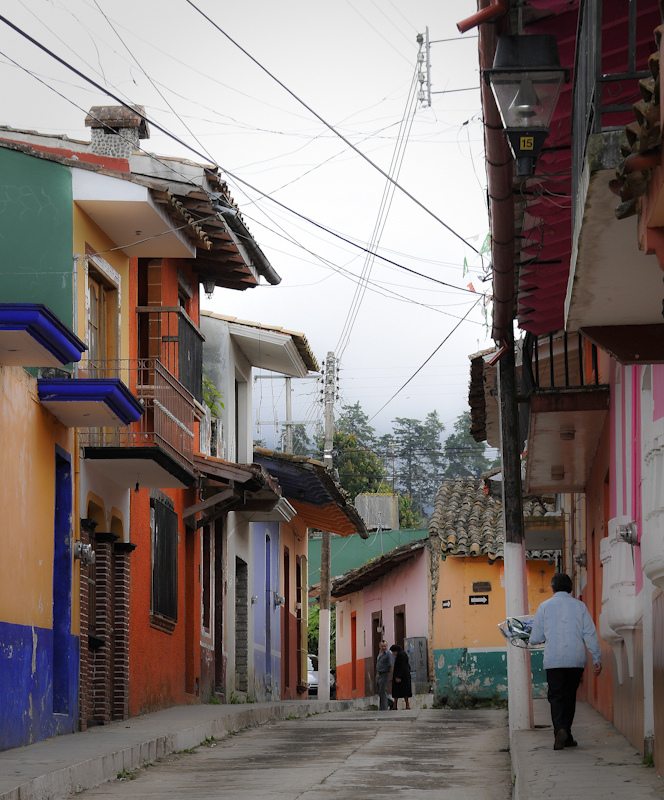
Naolinco, Mexico. There’s actually a curb here, although I bet that is more for drainage than anything. Same formula: Really Narrow Street (about sixteen feet wide here I think), no front or side setbacks.

Cartagena, Colombia. These look like townhouses. They can often have very nice central courtyards (quite common in Latin America) and backyards.
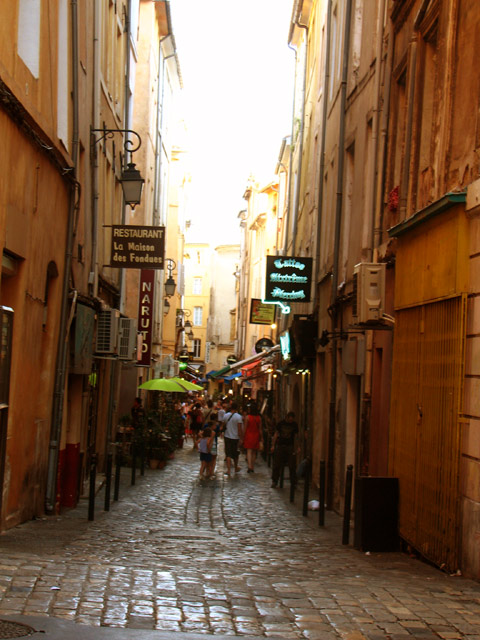
Provenza, France. Note the beautiful cobbled streets. You can do this sort of thing when the street is only about 13 feet wide, as is the case here. If you have an eighty-foot wide street, it becomes very difficult and expensive.
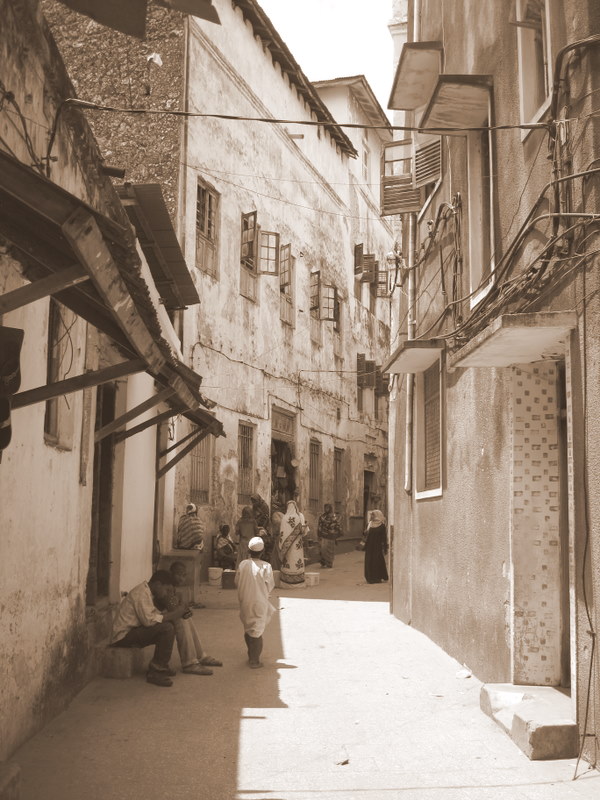
Zanzibar, Tanzania. Looks a lot like France, Colombia, Vietnam and Mexico. Why is that? It’s because people are about the same size everywhere. You would find that their beds and pants are about the same size too. If that’s the case, then why do we keep making streets that are four times as wide as this? Do you wear pants with a 120-inch waistline, or a bed that is 28 feet long?
We, in the U.S., have actually been making our streets way too wide since long before cars — beginning in the late 18th century, actually.
July 26, 2009: Let’s Take a Trip to an American Village 3: How the Suburbs Came to Be
July 19, 2009: Let’s Take a Trip to an American Village 2: Downtown
July 12, 2009: Let’s Take a Trip to an American Village
It was never a matter of “we have cars now, so we need to make our streets wider.” Rather, it was a matter of: “We have these enormously wide streets, which are full of mud because they are too wide to pave, so walking sucks, and everything is really spread out. It would be great to have an automobile.” Suburbia actually dates from far before automobiles. We made Suburbia first (the 19th Century Hypertrophic pattern of single-family farmhouses on quarter-acre plots, with very wide streets, front setbacks, etc.), and then — a century later — made automobiles so we could get around Suburbia more easily.
Tortuguero, Costa Rica. Street width of perhaps twelve feet here. Nice place for kids to play. Living “close together” doesn’t have to be miserable, as it is in virtually all U.S. cities.
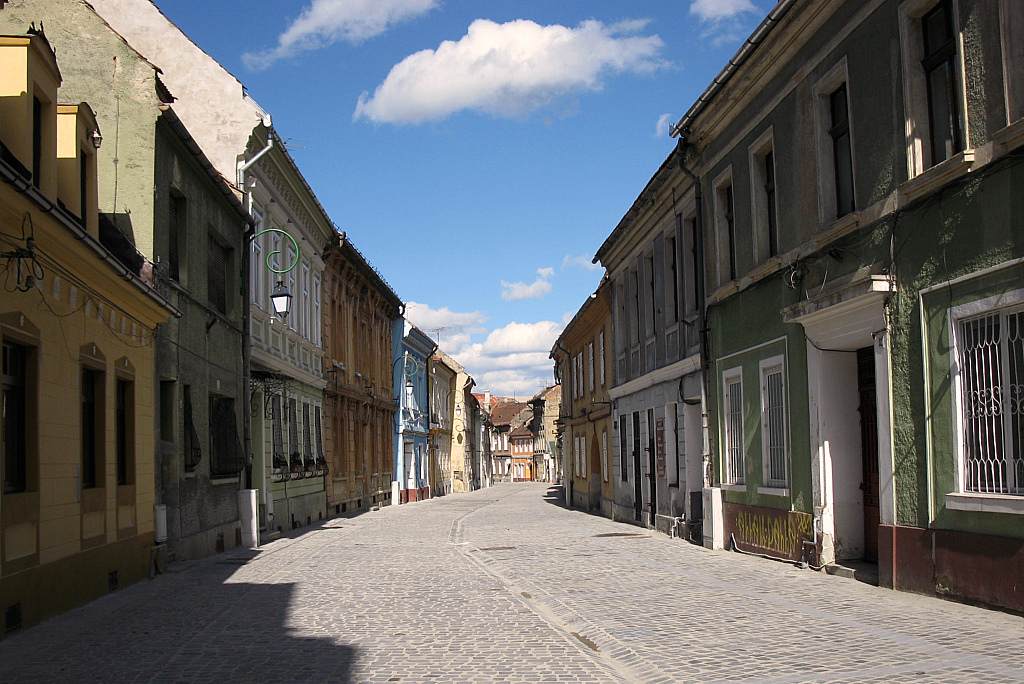
Unknown place. Street width about twenty feet here. See what I mean that twenty feet is actually pretty wide? You wouldn’t want it any wider than this. It would start to feel very barren and harsh — not comfortable and cozy, like many of our examples thus far.
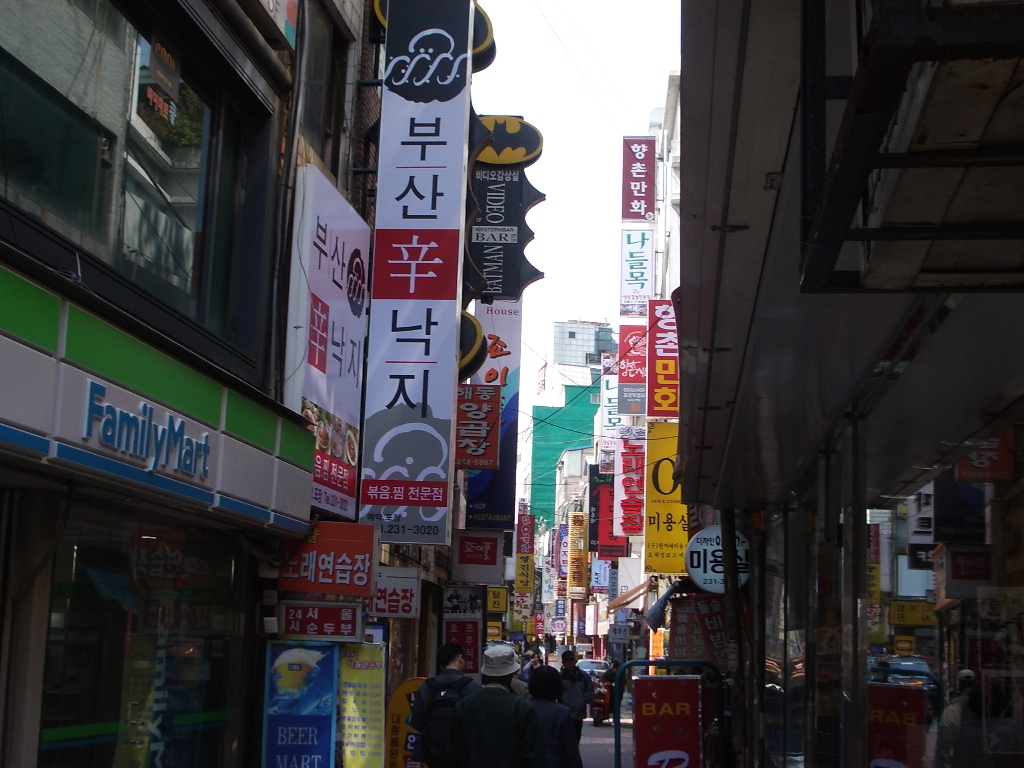
Busan, Korea. This is not an antique French village, it is very modern and contemporary. However, the basic pattern is the same. Street width about fifteen feet here. Buildings side-by-side and no front setback. No sidewalks and segregated central automobile roadway. The whole street is a “sidewalk.” Note that there are cars and motorcycles in the distance. Cars are not banned. But, they stay to larger, “arterial” streets (with a central roadway and sidewalks) unless they have a specific reason to go to a street like this, typically because of some kind of pickup or dropoff.
Not all streets should be “really narrow.” I suggest a ratio of about 80% Really Narrow “people streets,” 17% “Arterial” streets with sidewalks and at least two lanes of automobile roadway, and 3% “grand boulevards” of four-to-eight lanes of traffic. Actually, even if 80% of your streets are Really Narrow, you are usually only about a few hundred meters away, at most, from an Arterial street. So, driving really isn’t a problem. You just sneak in to the Really Narrow Street for the last hundred meters of your journey. Also, most of these places have excellent train systems, so you don’t have to use a car in the first place.
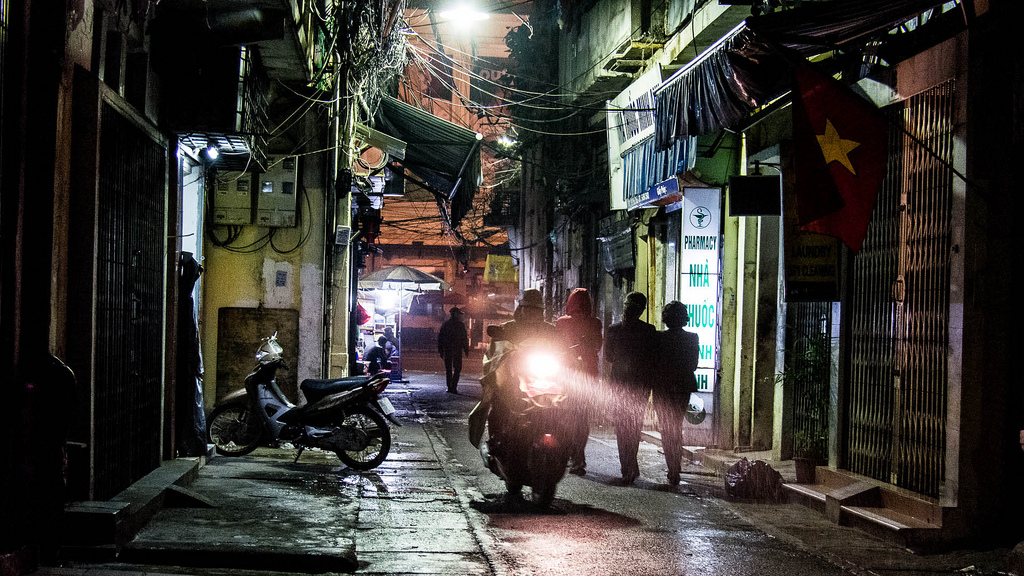
Hanoi, Vietnam. Motorcycles aren’t banned, but this is still a lovely Really Narrow Street. Note how walkers and drivers can get along fine together, sharing the same roadway. The three people on the right don’t seem to have any problem with the fact that a motorcycle just passed them by inches. He probably isn’t going very fast.
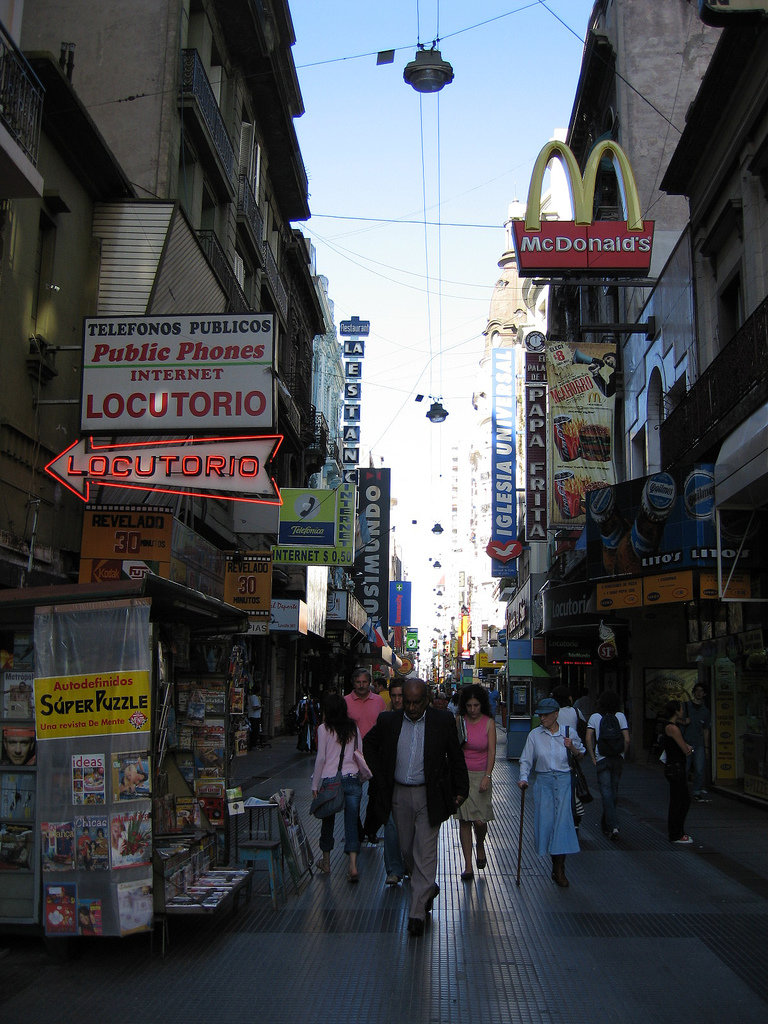
Buenos Aires, Argentina. Whether a very large city of millions, or a tiny village, the basic pattern is the same. Really Narrow Streets of 8-20 feet wide, no sidewalks and central automobile roadway, and buildings side-by-side with no front setback.

San Jose, Costa Rica. San Jose is the capital and largest city in Costa Rica. This is actually a fairly wide street, but it has a lot of people in it so that is fine.

Antigua, Guatemala. Another rather wide street, by “people street” standards, but quite nice.
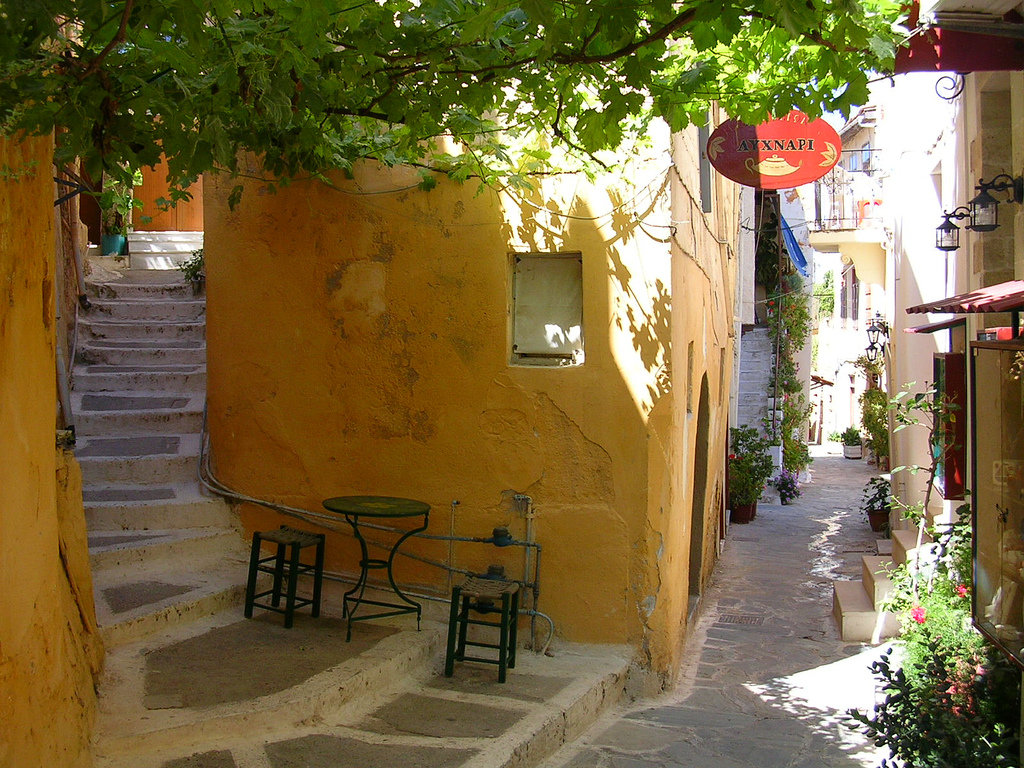
Chania-Crete, Greece. What’s the width of this street? Maybe four feet in places. But it doesn’t feel “crowded” does it? Look how the addition of just a few potted plants makes the mood very verdant.
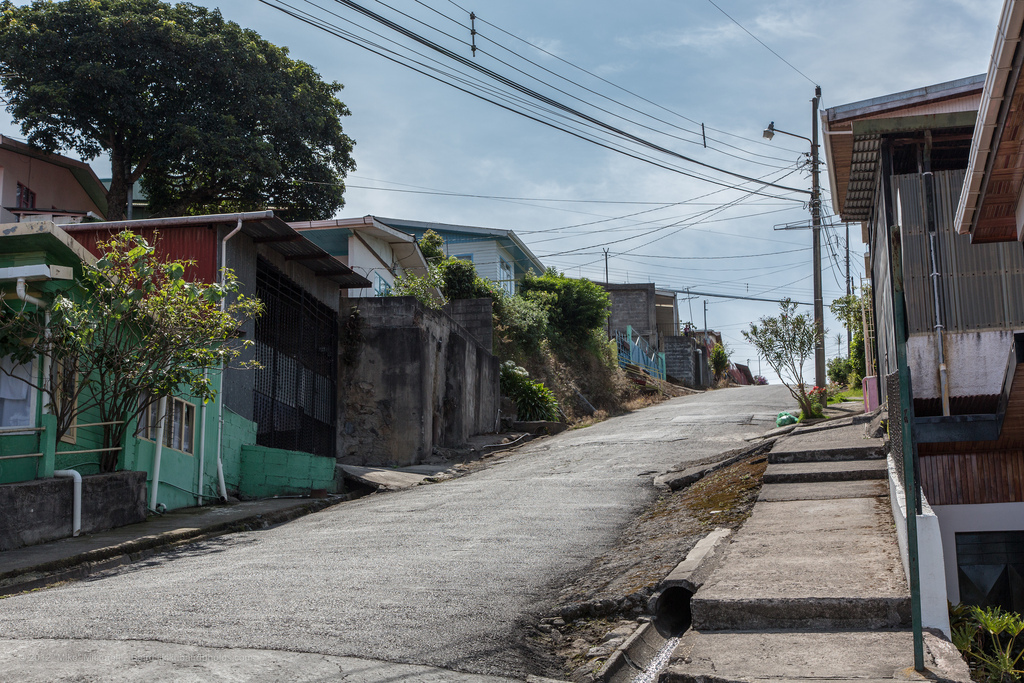
Zarcero, Costa Rica. This looks like a quiet residential street. The width is about eighteen feet perhaps. It doesn’t look like people here have high incomes, judging by the houses, but they can still live in a pleasant and lovely place. It’s not really about architecture, or expense.
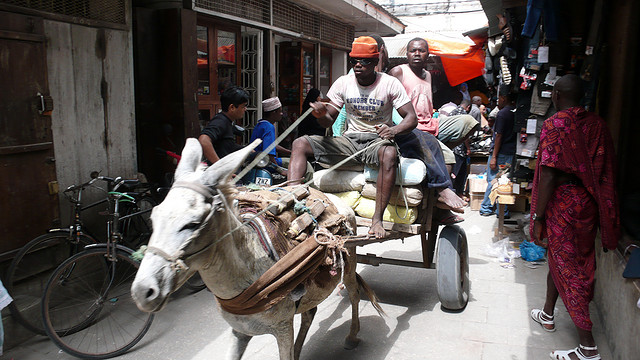
Zanzibar, Tanzania. People, bikes, and mule carts all getting along together on a street about twelve feet wide.
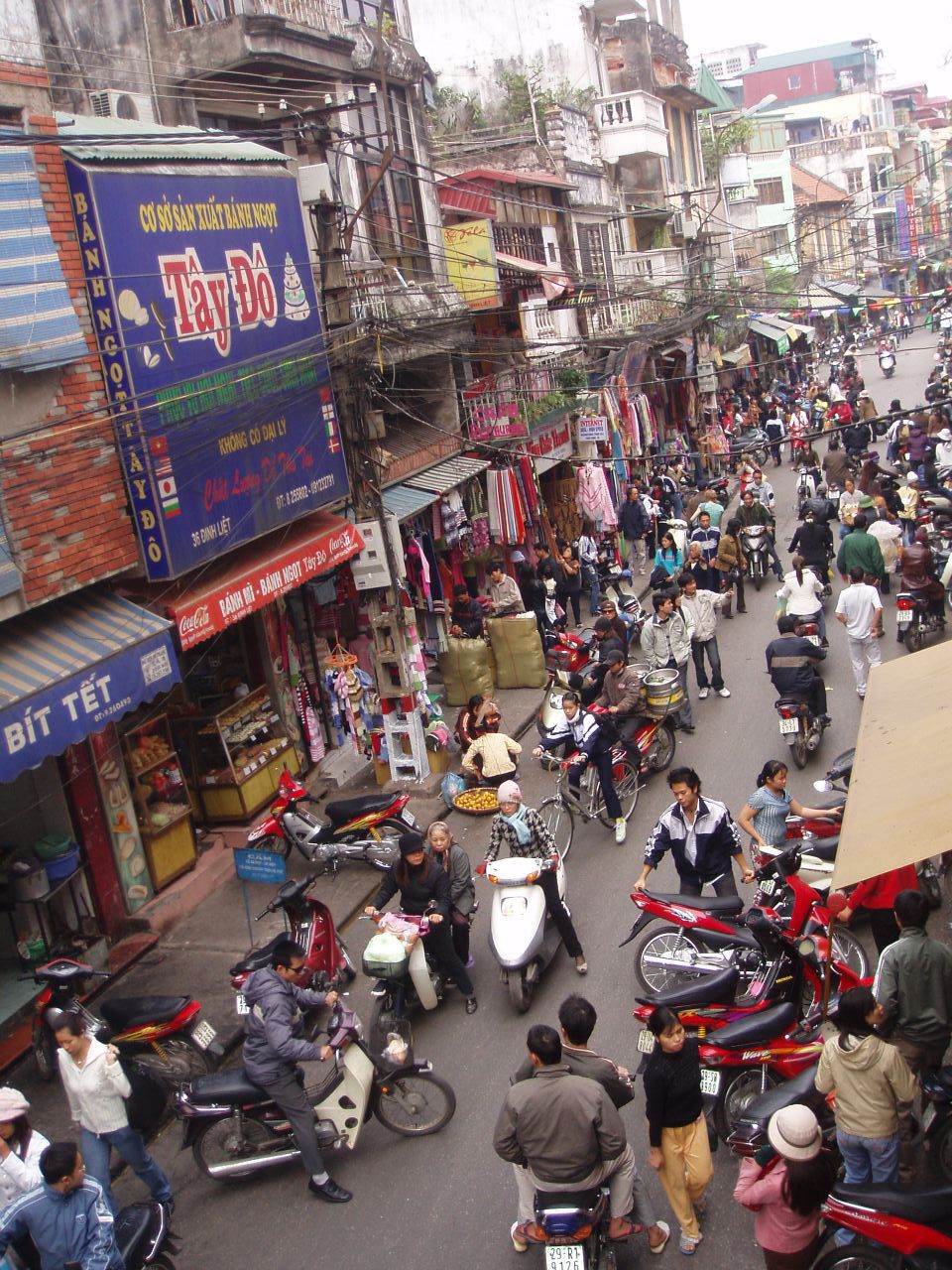
OLYMPUS DIGITAL CAMERA
Hanoi, Vietnam. Hanoi doesn’t have any subways or trains, so a lot of people use bikes and scooters. Here’s an idea of how bikes, scooters and people can mix together. Actually, it doesn’t work so well. It is far better to have a proper train system, so you don’t need to own a bike or scooter — or, at least, not use it very much to get around in town.
August 1, 2010: The Problem With Bicycles
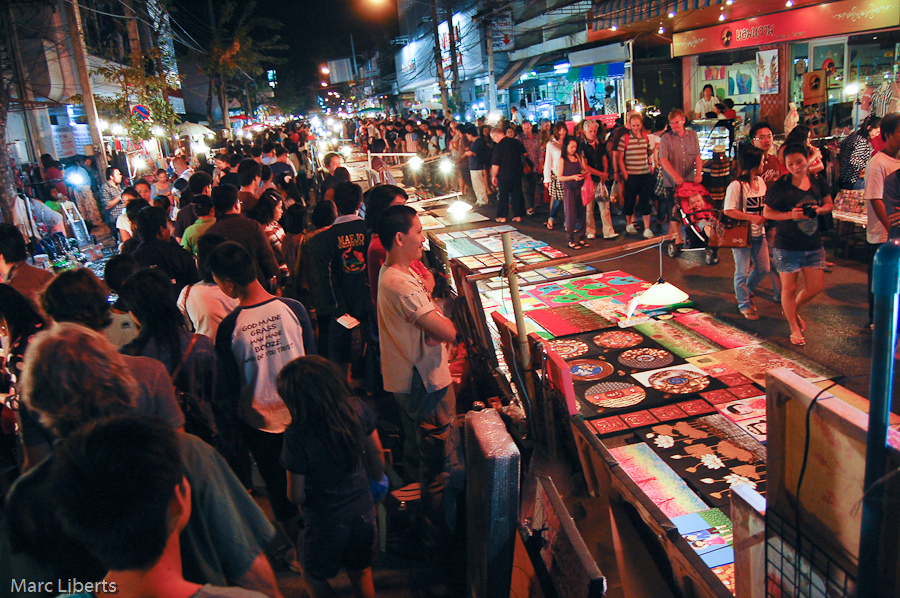
Chiang Mai, Thailand. This is a fairly wide street — wide enough that, even with a lot of people, there is enough space to use some of it for a street market. But, you can’t have a street market on every street. That’s why most “people streets” should be 8-20 feet wide.
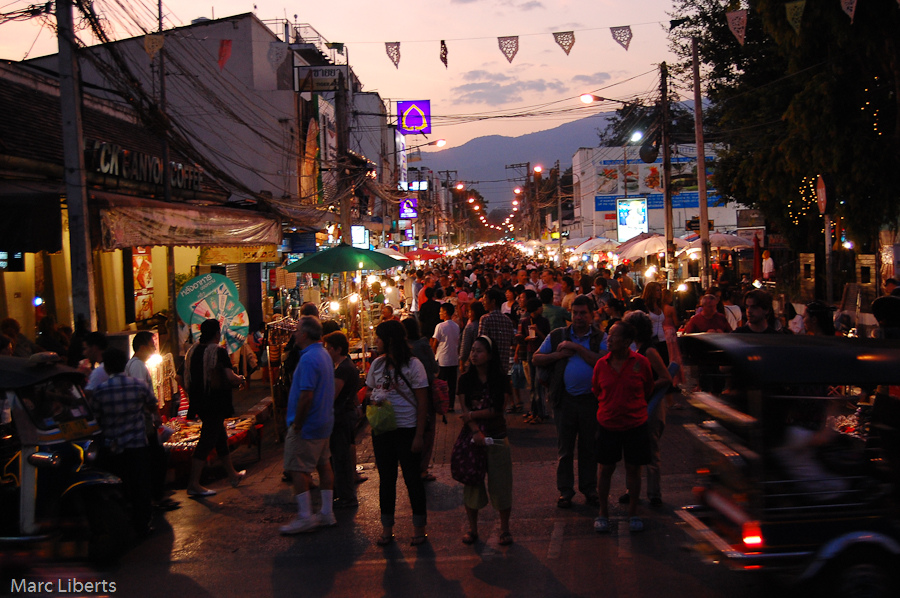
Chiang Mai, Thailand. Lots of people here. Doesn’t that look like fun? Why don’t we make something like this, in the U.S.? Actually, we have.
But, it is very rare.
Let’s make more. Most streets should be “Really Narrow” people streets of about 8-20 feet wide, for both commercial and residential areas.
July 31, 2011: How To Make a Pile of Dough With the Traditional City 5: The New New Suburbanism
July 1, 2012: How To Make a Pile of Dough With the Traditional City 9: Townhouses With Parking
November 11, 2012: HTMAPODWTTC 10: Let’s Bulldoze a Big Box Shopping Center 2: No, Seriously

